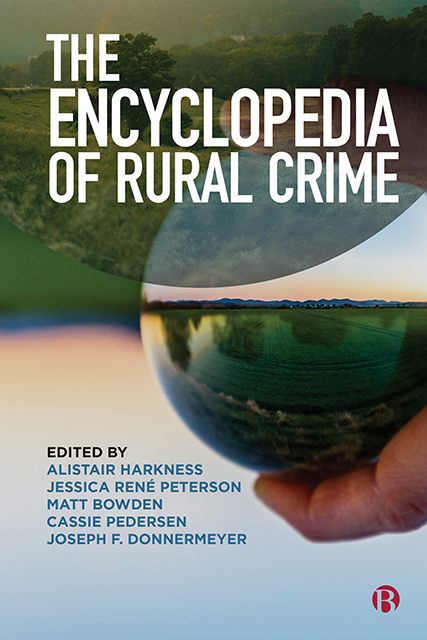Book contents
34 - Cross-border Livestock Theft
Published online by Cambridge University Press: 20 June 2023
Summary
Cross-border livestock theft occurs within the context of influences such as religion and wars and across rivers, mountains and oceans. Any attempt to discuss cross-border livestock theft is futile without conceptualizing the context of a border. A border can have an unprecedented number of meanings: the border between two farms; the boundary between police precincts; different policing counties; between states or provinces internally within a country; and between countries. No matter what determines country borders or boundaries between whom and whatever, borders do influence criminal activities.
Consideration as to how countries are formed and utilize borderlines is essential. Historically, treaties after a war, marriages between people of different kingdoms, colonialism, culture, religion and so on have determined country borders. In most cases, country borderlines have been determined by geographic features such as mountain ranges and rivers, or politically as lines drawn on a map such as the ‘Scramble for Africa’ in the late twentieth century.
The enforcement of borderlines is another factor that needs to be kept in mind when referring to livestock theft. Notorious borderlines are the security fence between North and South Korea, and the United States and Mexico borderline. The primary purpose of borders between countries is to protect the sovereignty of a nation, and – as a secondary purpose – countries regulate the movement of people and trade commodities. The factors which have determined country borders impact on crime in rural areas and livestock theft.
Religious challenges in cross border livestock theft
In 1947, Sir Cyril Radcliffe divided the old India using religion to separate Muslim and Hindu areas: the result was the creation of contemporary Pakistan, Bangladesh and India. The boundaries between these countries are artificial as there are no or limited natural borders. Hinduism (India) allots cows ethical treatment and respect: cows and their by-products are considered sacred. Muslims (Bangladesh), alternatively, do not prescribe special treatment for cows. The difference in religious attitudes towards cows provides a trade relationship but also increases livestock theft. Rustlers have been smuggling the animals from India to neighbouring Bangladesh for many years.
- Type
- Chapter
- Information
- The Encyclopedia of Rural Crime , pp. 137 - 140Publisher: Bristol University PressPrint publication year: 2022



